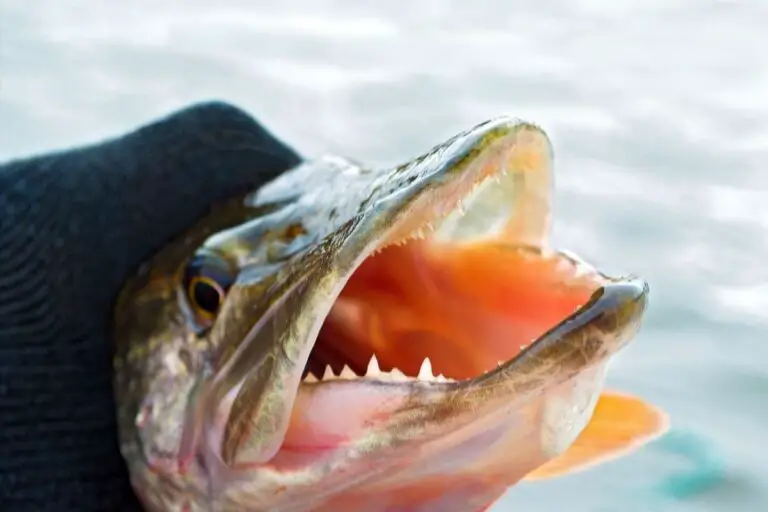Pike vs. Pickerel: Full Comparison
Navigating the subtle but significant differences between Northern Pike and Pickerel is useful for anglers seeking success on the water.
This article provides a concise guide to distinguishing these two fish, covering their distinct color patterns, sizes, habitats, geographical ranges, and the specialized gear and techniques essential for an effective catch.
Whether you’re an experienced angler or a newcomer, unraveling the nuances between Pike vs. Pickerel enhances your fishing prowess and ensures a more rewarding experience on the water.
Table of Contents
Pike vs. Pickerel
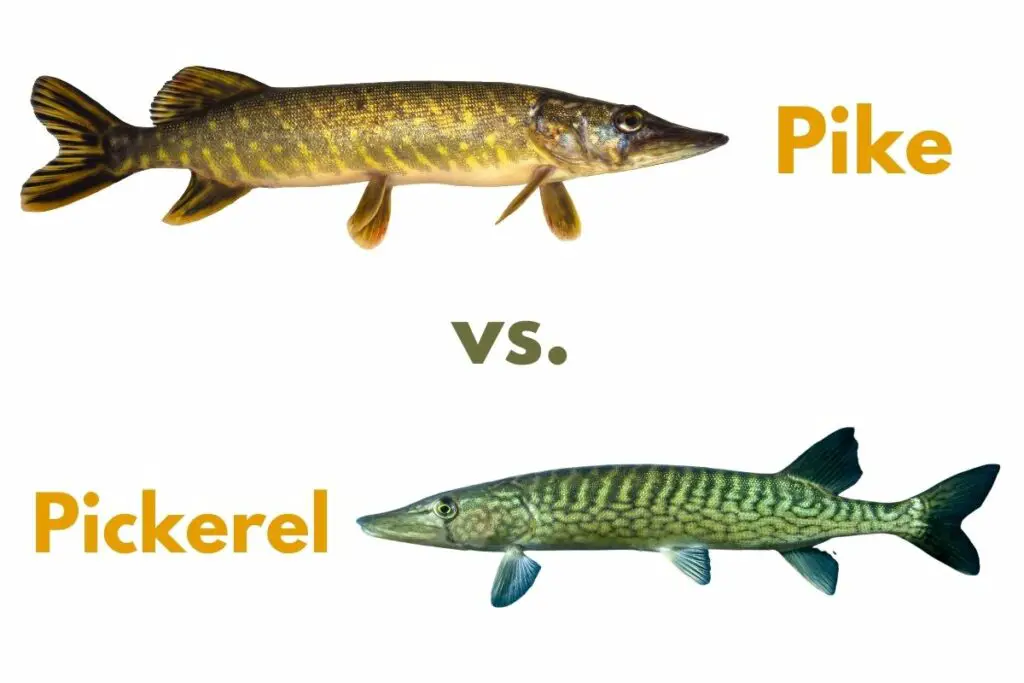
Physical Differences
First and foremost, we need to know how to tell these two fish apart.
Color and Pattern
They certainly do look very similar and can be hard to identify if you catch one. But with a trained eye, you can easily tell them from one another.
Pike
Pike have an olive green colored body, but this green can become very pale and closer to gray in color during cold or low light times of the year.
The best color distinction of a pike is the white or yellow spots across its body. The spots towards the gills and tail of the pike will be round in shape, and the spots throughout the middle and belly of the pike will be longer and more horizontal in shape.
Pickerel
Pickerel will have a much lighter green or yellow body color. Instead of spots, pickerel have almost maze-like lines covering their body. These lines are typically a dark green or black color.
Pickerel also have a dark, vertical line directly below their eyes. This line is the most telling and clear sign that you have caught a pickerel.
Size Differences
Pike and pickerel reach very different sizes. This can make it easy to tell them apart and greatly influences how you fish for them.
Pike
The average adult Pike will range from 18-30 inches and length and 12-25 lbs. However, some pike can reach huge sizes such as the Canadian national record pike which was 50” long and over 50 lbs.
Pickerel
Pickerel are much smaller and have a relatively low ceiling on their size. The average adult pickerel will range from 18-24 inches in length and 3-5 lbs.
Pike and Pickerel Habitats
Both the Northern Pike and Pickerel share common habitats and hunting grounds, but their environmental preferences diverge due to their biological distinctions.
The Pickerel favors warm, slow-moving streams, ponds, and shallow bays within larger lakes. True to its name, the Pickerel thrives amidst abundant aquatic vegetation and is also known to hunt in areas with rocky or gravel structures. Similar to the Muskie, the Pickerel is a sight hunter and flourishes in clear to tea-stain-colored water.
On the other hand, the Northern Pike, while young, adopts hunting strategies akin to the Pickerel. However, as they mature, Northern Pike, being a cool-water species, tends to explore deeper depths, especially during the hot summer months.
In contrast to the Pickerel, which tends to stay in shallower, grassier waters, the Northern Pike shows a preference for slow, heavily vegetated rivers, weedy bays, drop-offs, and shoals.
Geographical Location and Range
Pike Range
Pike are primarily located in Canada and the Northern United States. However, they do range all the way down to a couple of southern states in the middle of America.
Pickerel
Pickerel have a much smaller range and are found primarily in the Eastern United States. Pickerel do range into the Southern states and can be found as far as Texas.
Fishing Gear for Pike vs. Pickerel
The main difference in the gear you use is the size and power of your rod, reel, and line.
Since pike get much bigger than pickerel, you are going to be using heavier-duty gear. You can use spinning and casting rods for both species of fish, that choice depends more on the lures you are using than the species you are targeting.
Rod and Reel
For pike, I like a 7’-7’6” medium heavy or heavy rod. You need the extra power and length in your rod to battle with the big and aggressive pike.
You can use spinning rods for pike, especially when you are downsizing your lures for finicky pike. But I prefer the extra power and backbone of a casting setup the majority of the time.
When targeting pickerel, your setup is going to look much the same as a bass fishing setup. 6’6”-7’2” rods that are either spinning or casting. You are going to be using much smaller and lighter lures to catch pike, so it does often help to have a spinning reel setup to give you extra casting distance.
Line
When catching big pike, a 20-60 lb line is going to be necessary. If there are lots of grass or brush, lean towards the heavier, 50-60 lb line range.
Similarly to the rods and reels, the line you use for pickerel fishing will be much like you would with bass. An 8-20 lb line will work great in pretty much any scenario.
With both species of fish, you have to account for their teeth. Both pike and pickerel have big, sharp teeth and can cut your line. When pike fishing, I always use a 4-6” wire leader to attach my line to my baits. I sometimes use a wire leader for pickerel as well, but I can usually get away with using a braided line as my leader.
Instead of the wire, I will use a short, 40-60 lb braid leader. The smaller mouths of pickerel usually won’t eat the entire lure anyway, and the braid is strong enough to prevent break-offs.
Seasonal Fishing Differences
- Spring: During spring, both Northern Pike and Pickerel exhibit increased activity levels as water temperatures rise. This season marks their spawning period, prompting them to migrate to shallower waters for reproduction and feeding. Anglers often find success targeting these species in the shallows during this time.
- Summer: In the warmer summer months, Northern Pike may shift to deeper, cooler waters, especially in lakes and reservoirs. On the other hand, Pickerel might stay in relatively shallow areas, utilizing cover such as vegetation and structures to escape the heat. Adjusting fishing strategies to account for these preferences can enhance success during the summer season.
- Fall: As temperatures start to cool again in the fall, both Pike and Pickerel become more active. Fall is considered a prime time for fishing these species, as they begin to feed more voraciously in preparation for the upcoming winter. Targeting transition zones and areas with abundant prey during the fall can lead to rewarding catches.
- Winter: During the winter months, both Pike and Pickerel tend to become less active. They may move to deeper and more lethargic waters, slowing down their metabolism. Ice fishing can be an option in regions where lakes freeze over. Anglers often use specialized techniques and baits to entice these fish in the colder months. Fishing near structures or drop-offs can be effective during winter. Always exercise caution when ice fishing for pike or pickerel and ensure the ice is safe before venturing onto frozen bodies of water.
Best Lures for Pike and Pickerel

Both pike and pickerel are very aggressive hunters. The most effective lures have lots of flash, bright colors, vibration, or noise. But these fish especially seem to love flashy, reflective lures.
Best Pike Lures
- Musky Inline Spinners: Musky spinners are very effective pike lures that feature rotating blades to create vibration and flash. The inline design minimizes snags and provides a lifelike presentation, making them enticing for pike.
- Buzzbait: Buzzbaits are surface lures that create a buzzing sound and surface disturbance. The obnoxious splashing triggers tons of bites from aggressive pike.
- Big Spoons: Big spoons are metal lures shaped like a spoon with a wobbling action. Spoons are an absolute classic pike lure that has been time-tested for decades.
- Big Paddle-Tail Swimbaits: These swimbaits feature a large, paddle-shaped tail that creates a realistic swimming action. The lifelike movement and larger profile make them appealing to pike, especially in situations where they are targeting bigger prey.
- Headbanger Shad: The Headbanger Shad is relatively new on the pike fishing scene, but it is already one of the best pike lures you can use. The Headbanger Shad is a unique lure with a jointed design and head shape that causes the lure to randomly dart or swim to the side. This erratic action is perfect for the pike that follow and trail your bait for long distances.
Best Lures for Pickerel
- Swimbait with Underspin: A swimbait with an underspin has a very natural action and matches the forage size of pickerel. The added underspin creates flash and vibration, making it an attractive choice for pickerel that are drawn to both movement and visual cues.
- Spinnerbait: Spinnerbaits are effective for pickerel due to their flashy blades and enticing movement. The rotating blades create vibration and imitate the movement of small fish, triggering aggressive strikes.
- Suspending Jerkbait: A suspending jerkbait mimics wounded baitfish as it suspends in the water column and is my go-to cold water lure. The erratic twitching action during retrieval can trigger pickerel strikes, especially when they are in a predatory mood.
- Inline Spinner: An inline spinner is a classic and effective lure for pickerel. Its simple design with a rotating blade attracts attention, and the streamlined profile reduces the risk of snagging in weedy areas.
- Lipless Crankbait: Lipless crankbaits can be retrieved at various speeds and depths, making them effective for covering different areas where pickerel may be hiding. These are traditionally considered a bass lure but have the perfect size and versatility to catch pickerel.
Fishing Techniques for Pike and Pickerel
You may have noticed that none of the lures are finesse-style baits. This is because both pike and pickerel are very aggressive predators.
Power fishing techniques work best for these fish that are primarily sight hunters. Showing them something flashy, fast, and easy to spot is the best way to get both species to eat your lure.
Pickerel vs. Walleye Confusion
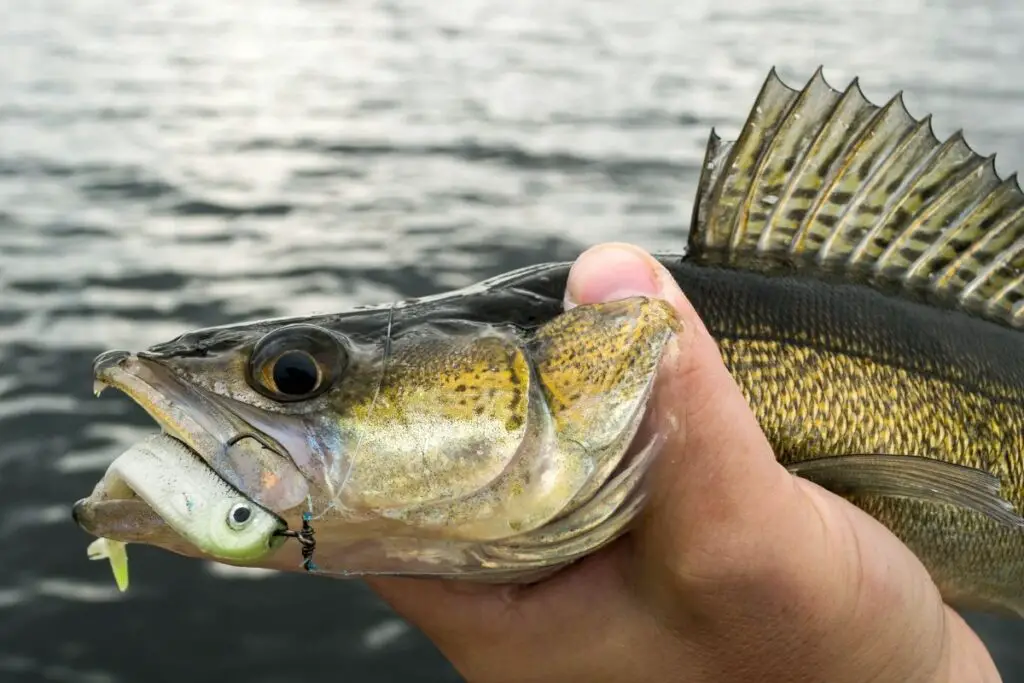
There is a bit of confusion between pickerel and walleye species. You might be thinking, “How, they don’t look anything alike?” Yes, this is true. But for some reason, up in Canada, a lot of anglers refer to walleye as, “pickerel”.
Maybe since actual pickerel don’t range up into Canada, they felt the need to name one of their own fish after it. I really do not know why or how this started, but it can certainly cause some confusion. So just understand that if you hear a Canadian say “pickerel”, they might actually be talking about walleye.
Tying this Off
From recognizing their unique features to adapting the right gear and techniques, this knowledge opens up a world of opportunities for a successful fishing expedition.
Whether casting in the Northern United States, Canada, or the Eastern United States, understanding the distinctions between Pike and Pickerel elevates the angling experience.
So, next time you’re by the water, armed with the right information, dive into the challenge of distinguishing these predatory species and let the thrill of the catch unfold.
Get Started with Pike Fishing
- Learn what are the best pike baits here
- Check out the best braided fishing lines for pike here
- Start getting results with these budget baitcasting reels
- learn how to fish for pike in the winter in my guide to cold weather pike fishing here.

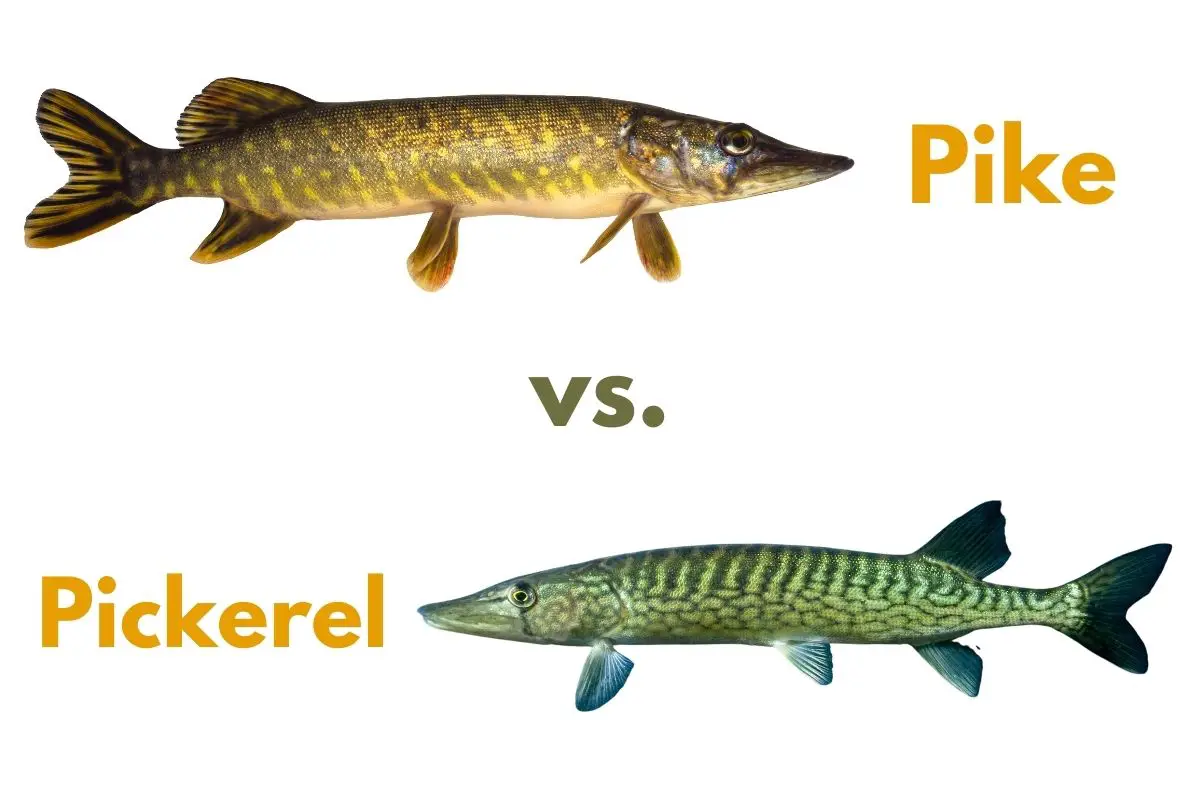
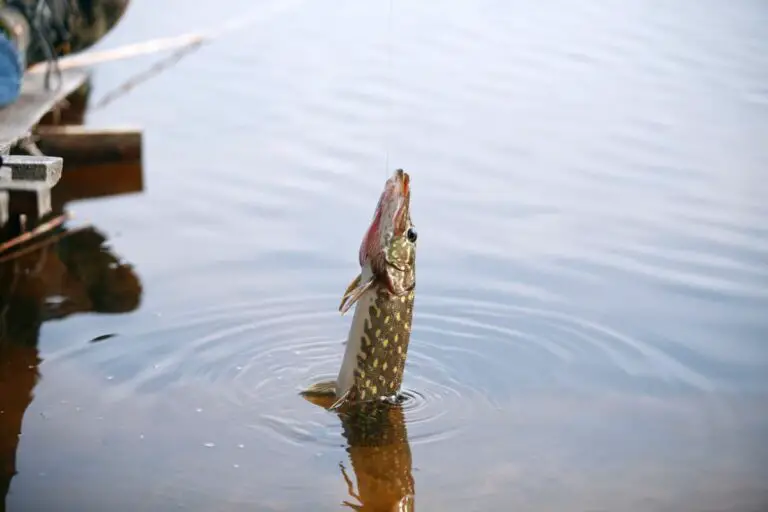
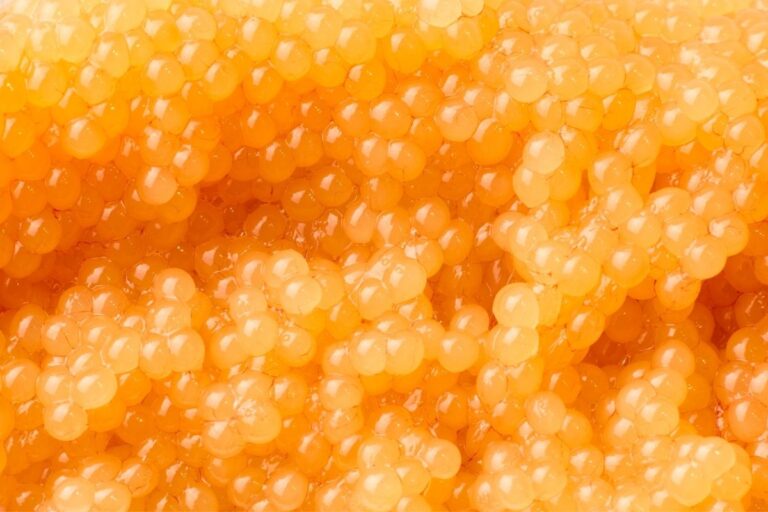
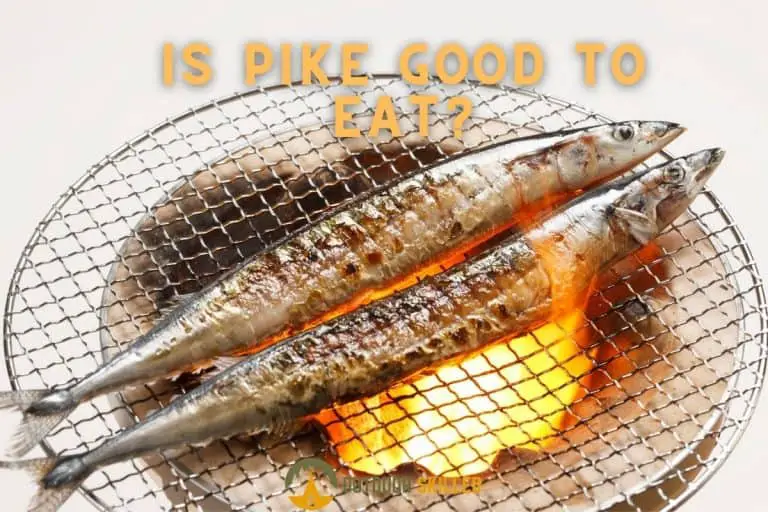
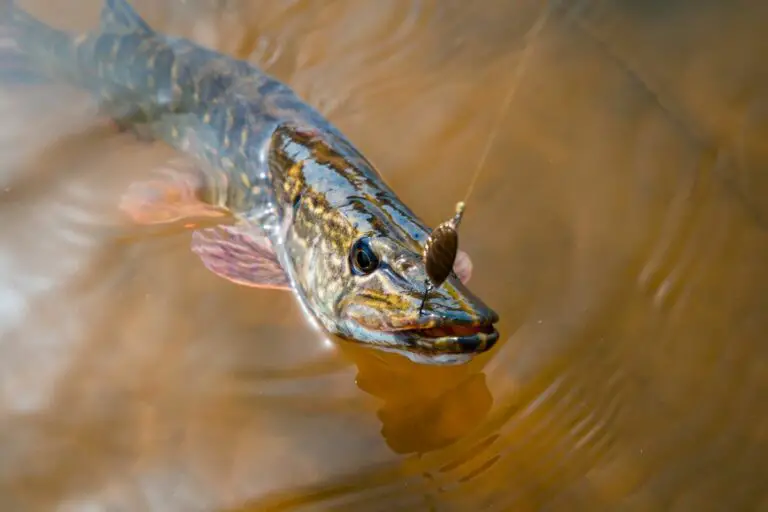
![Do Pike Eat Shrimp? [A Guide to Catching Pike with Shrimp]](https://outdoorskilled.com/wp-content/uploads/2022/04/shrimp-as-bait-on-hook-768x512.jpeg)
